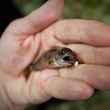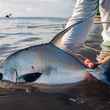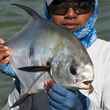As we all remain waiting, hopeful that the EPA will choose to exercise its well established power to veto large-scale open-pit mining in the Bristol Bay region, Alaskan representatives continue to spout nonsense in regards to the Pebble Mine project.
Senator Lisa Murkowski, who recently received some accolades for urging Pebble Partnership CEO John Shively to move forward with formally presenting a mining plan that can be scrutinized by the public and state and federal agencies, was quoted this week indicating that she has confidence that humans now have the technology to safely construct and maintain a mine such as Pebble. Murkowski stated, "there may have been a time when you could not build a dam, a tailings pond like Pebble is talking about, without it impacting the watershed.” She continued, “I happen to believe we’re pretty smart nowadays. Our technology has come a long way.”
Murkowski noted this after acknowledging multiple past failures in Alaska's attempts to safely develop and harness its natural resources, calling those projects "actions and development proposals that we’re not exactly proud of in our state." Murkowski elaborated, providing examples of these failures such as overharvesting of fish leading to nearly decimated fisheries and clear cutting in the Tongass National Forest.
Yet, despite histories of technological failures and poor planning, Murkowski expressed confidence in the currently available mining technology's ability to maintain a leak-free dam holding back an estimated 2 billion metric tons of toxic waste. In the case of Pebble, this toxic waste would be primarily sulfuric acid but would predictably also contain lead, zinc, cadmium, selenium and arsenic. In establishing her rosy outlook, Murkowski either ignores or is ignorant of the facts that the frequency major tailings facility failures worldwide has actually increased in modern technological era of recent decades, that the sort-of-proposed Pebble Mine and its tailings dam would be constructed in a seismically active area with frequent tremors and earthquakes, and -- most importantly -- that the tailings facility constructed as part of the Pebble Mine would have to exist and be maintained in perpetuity. You know, forever.

Not to be outdone, Alaska congressman Don Young made the following comment in regards to concerns that mining and healthy fisheries can't safely coexist in Bristol Bay. "It’s an amazing thing people say they can’t [coexist]. That’s wrong. I believe this very strongly. Look at the Copper River king. Why do they call it the Copper River king?"
Young was referring to the Copper River king salmon, which many people consider to be the finest salmon in the world, and whose harvest is highly anticipated each year. The Copper River is named for the rich copper deposits along the upper portion of the river, which were extracted at the Kennecott Mine site over 75 years ago, during the years 1911-1938.
Young is defending the practicality of the Pebble project by pointing out that copper mining at Kennecott failed to destroy the Copper River salmon runs. This Kennecott-Pebble comparison is one regularly made by Pebble Mine advocates, but one that has been repeatedly dismissed, by anyone willing to so much as scratch the surface of the comparison, as pure nonsense. The reasons why abound, but include vast differences in the copper concentrations in the ore at the two sites (13% at Kennecott vs. 0.38% at Pebble) resulting in dramatically difference amounts of mining waste, significant geological differences in the rock surrounding the mining sites, a strong concentration of acid-neutralizing carbonates present at the Copper River site vs. very few at the Pebble site, and entirely different mining and extraction methods (underground stope mining at Kennecott vs. open pit mining at Pebble).
The list goes on, but suffice it to say the comparison is well established as a defunct one, but yet continues to be perpetuated by an Alaskan congressman who has the responsibility to protect Alaskans and their natural resources from projects that put them at risk.
Despite the majority of Alaskan's opposition to large scale mining in Bristol Bay, their representatives continue to ignore the will of their constituents. To make matters worse, they do so while demonstrating either a lack of knowledge and understanding of this vitally important debate, or an unprincipled willingness to be disingenuous and dishonest about the facts surrounding the issue.
































Comments
Jon Corbett replied on Permalink
I enjoyed reading this... Thanks from Bristol Bay!
Pages